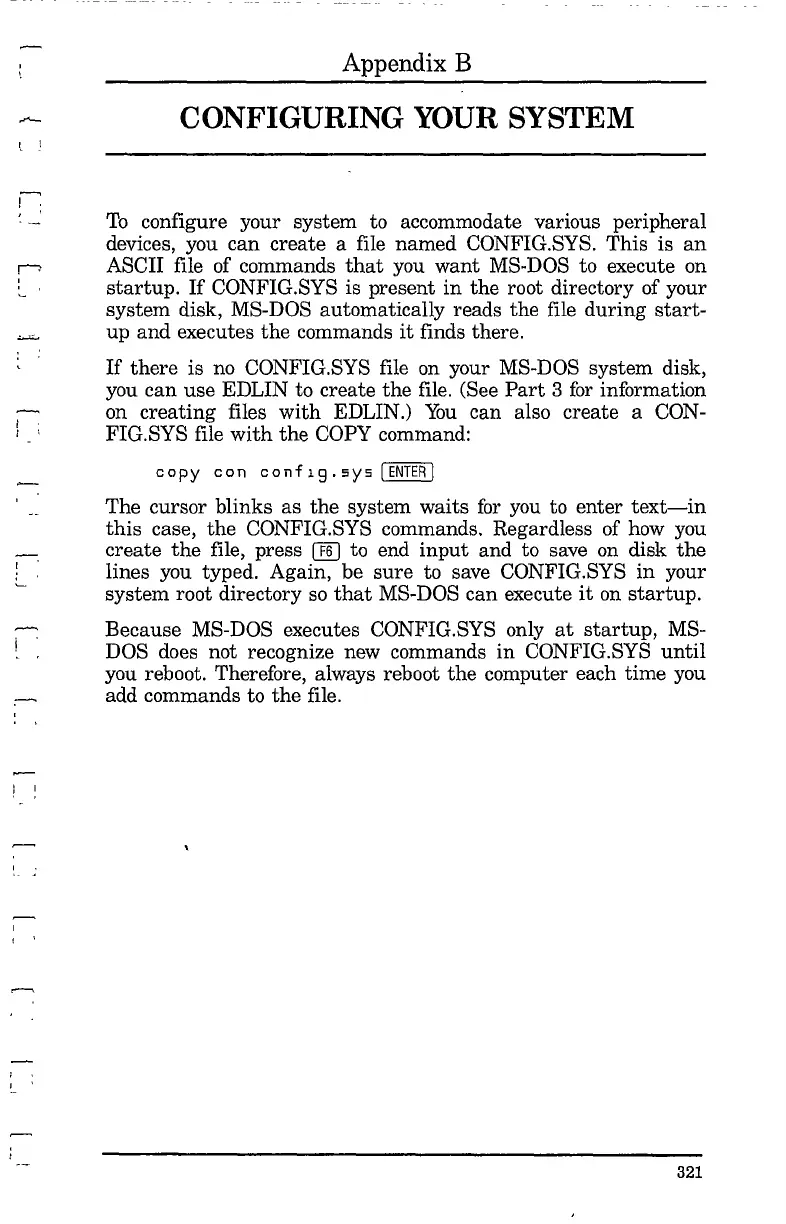,.-,
,
, ,
I
! \
I
, '
,
,
'
Appendix B
CONFIGURING YOUR SYSTEM
To
configure your system to accommodate various peripheral
devices, you can create a file named CONFIG.SYS. This is
an
ASCII file of commands
that
you want MS-DOS to execute on
startup.
If CONFIG.SYS is present
in
the root directory of your
system disk, MS-DOS automatically reads the file during
start-
up and executes the commands
it
finds there.
If there is
no
CONFIG.SYS file
on
your MS-DOS system disk,
you can use EDLIN to create the file. (See
Part
3
for
information
on creating files
with
EDLIN.)
You
can also create a
CON-
FIG.SYS file
with
the
COPY command:
copy
con
conflg.5y5[ENTER!
The cursor blinks as the system waits
for
you to enter
text-in
this
case, the CONFIG.SYS commands. Regardless of how you
create
the
file, press
(l[]
to end input and to save
on
disk
the
lines you typed. Again, be sure to save CONFIG.SYS
in
your
system root directory
so
that
MS-DOS can execute
it
on
startup.
Because MS-DOS executes CONFIG.SYS only
at
startup,
MS-
DOS does not recognize new commands
in
CONFIG.SYS
until
you reboot. Therefore, always reboot the computer each time you
add commands to the file.
321
